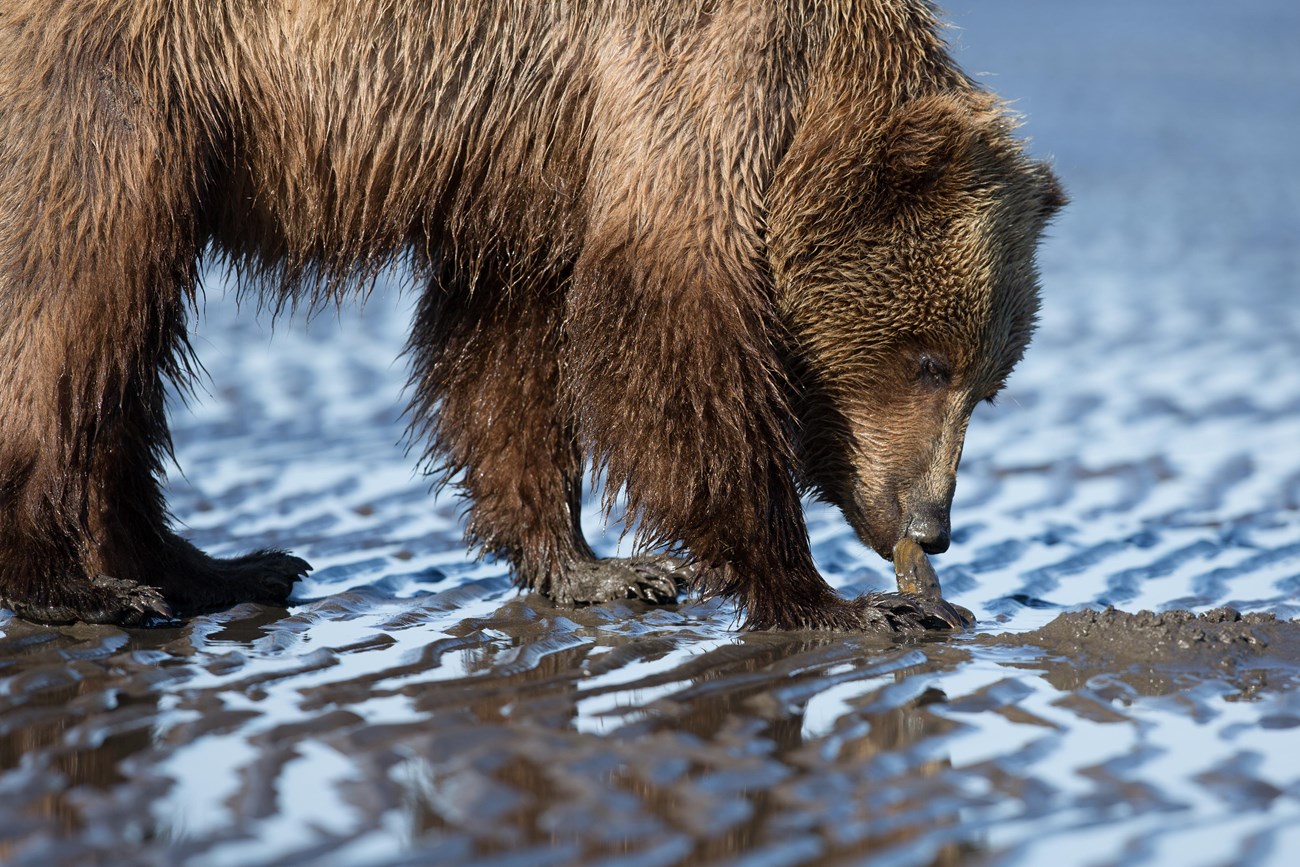Last updated: December 29, 2021
Article
Getting to the bottom of a keystone quandary
Sea otters, once hunted to near extinction in the northern Pacific Ocean, may be returning to Lake Clark National Park and Preserve’s coast. What would that mean for the ecosystem?
By Alix Pfennigwerth

Picture this: a keystone species—one capable of determining the structure and function of an ecosystem—is removed completely from that ecosystem. The ecosystem begins to unravel, and some species struggle, while others gain traction.
As all the other species are adjusting to the ‘new normal’, the keystone species—the one we originally lost—makes a comeback.
The return of a keystone species allows us to watch what happens when an ecosystem undergoes change… a natural experiment right before us. What resources will the keystone species use? How will this impact other species, perhaps now accustomed to using more of those resources? We can’t remember exactly what life was like before the species disappeared. But even if we could, would it be the same now?
These are some of the questions that Heather Coletti (marine ecologist with the National Park Service's Southwest Alaska Inventory & Monitoring Network) and her colleagues hope to answer through a new collaborative research project at Lake Clark National Park and Preserve (Lake Clark).

A keystone quandary
The keystone species in question? Sea otters. Well-documented as keystone species in the North Pacific, sea otters reduce invertebrate densities and stimulate kelp and eelgrass productivity, the effects of which can cascade throughout the ecosystem. In the late 1700s and 1800s, the commercial fur harvest hunted sea otters to near extinction in the northern Gulf of Alaska. With successful conservation efforts, however, sea otters have been re-colonizing much of their former range. They’ve been observed in several bays neighboring Lake Clark, but they haven’t re-colonized the park’s coastline… at least not yet.
The resources sea otters use? There are lots! But the research team is focusing on razor clams. Why? Because sea otters love to eat razor clams, which can comprise as much as 60-80% of their diet. And in the absence of sea otters? Razor clams likely flourished, especially in soft-sediment intertidal habitats, like those found along the park's coast.
Other species that might be impacted? Bears and humans. The park’s coast is home to both brown and black bears. In addition to salmon and sedges, they eat razor clams, and they might be benefiting from the park’s abundant, easy-to-access clam beds. There’s also plenty at stake here for us humans. For example, the park’s clam-eating bears attract some 10,000 (and growing) visitors to the coast each year, injecting millions of dollars into the local economy. Razor clams are also an important subsistence and commercial resource in the region.

Measuring the baseline
The research team spent several weeks on the park's coastline this summer collecting baseline data: a snapshot in time of conditions before they change. In this case, they’re collecting data on sea otters (Are there any here? And if so, what are they eating, and how hard are they working to get that food?), clams (How many are here? How big and how old are they?), and bears (What habitats are they using? How many clams, salmon, sedges, and marine mammals are they eating?). Baseline data are extremely useful for teasing out the impacts of environmental change: the ‘before’ in ‘before and after’. Yet in ecology, baseline data is often elusive—we often don’t collect it until it’s too late.

This project builds on the ongoing Changing Tides project in Katmai National Park and Preserve, where sea otters have recently reached carrying capacity after near-extirpation. Here, the team has found clam populations decreasing as sea otter populations stabilize. Brown bears in Katmai also appear to be “prey switching” (e.g., starting to rely more on sedges than salmon), while their clam consumption has remained stable, but low, over time. There is also evidence that some bears have started to hunt sea otters. However, these interactions and responses to changes may be more nuanced in Lake Clark because of its extensive soft-sediment habitat—ideal for clam beds—and its abundant brown bears and black bears.
By collecting these baseline data now, the team hopes to help park managers decide how best to provide recreational, subsistence, and commercial opportunities, while minimizing impacts to natural resources, in the future. That future will likely include not only sea otters, but also increased tourism, outside commercial pressures, sea ice retreat, and other unforeseen environmental changes. “Think about the 1989 Exxon Valdez oil spill,” Coletti says. “We didn’t really know what [natural resources] we had before the spill. But wouldn’t it have been nice if we had?”
Alix Pfennigwerth is a biologist and science communicator with the National Park Service.
